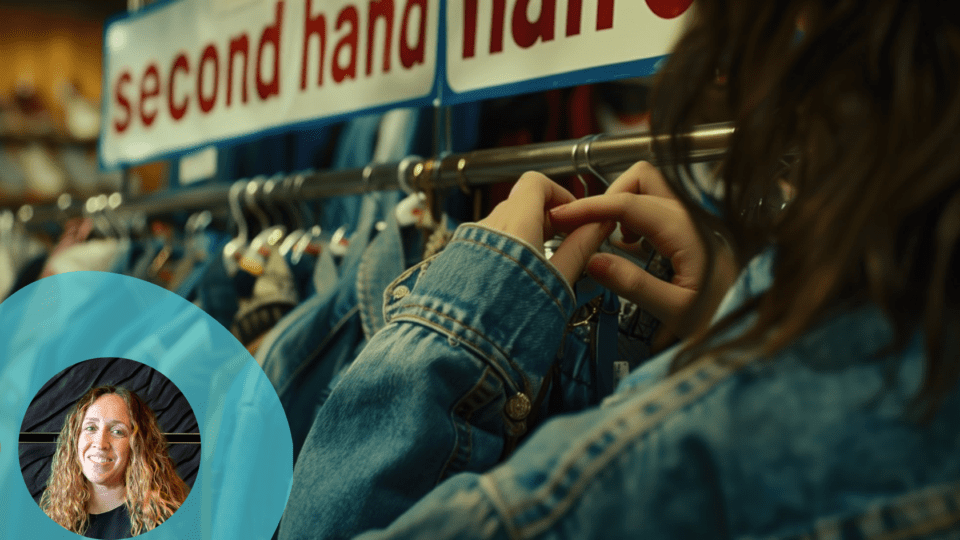Pre-loved fashion is having its moment, and for good reason. In the past year, 42% of U.S. shoppers have purchased secondhand items at a lower cost, with the added benefit of ensuring clothing gets a new lease of life and avoids landfills. With the sector valued at $43.9 billion in 2024, brands in this space are flourishing. Ebay was the pioneer in the category, but we’ve seen new pre-loved brands emerge over the past decade, such as Mercari, Poshmark and Vinted.
The move from buying new items to the growing popularity of secondhand clothing has presented a number of interesting branding lessons. The brands in this sector have transformed how the industry is seen. What were previously unwanted and undesirable items dumped at a thrift store have become valued as pre-loved items, full of potential for their next owner.
Their growing popularity has seen the big retailers getting in on the act. Zara’s “Pre-Owned” platform enables shoppers to sell, repair or donate pre-owned clothing, Net-a-Porter allows consumers to buy and resell secondhand designer items, and Patagonia’s “Worn Wear” program even allows shoppers to trade-in pre-loved products to buy new items.
It is still early days for the pre-loved fashion industry – competition is increasing but there is plenty of space for others to break through.
Changing the Narrative to Make the Unwanted, Wanted
The shift in how people now perceive secondhand clothing is the ultimate in branding. The term “pre-loved,” which has become key to the sector’s identity, welcomes the notion of secondhand clothing and tells a story of a loved product, cherished and now ready for a new owner to enjoy. Buying items from the likes of Poshmark and ThredUp is a trendy way to find clothing that shoppers won’t see everywhere that season and that express one’s sense of style. It’s not surprising it’s found popularity, particularly among Gen Z. Personally, I recently snagged a dress on Poshmark that I missed at retail several years ago, and it’s the thing I get the most compliments on this season.
The brands creating and leading this sector have leaned into how the world is changing. When I owned vintage stores, customers shopped the pre-loved fashion sections either for the stylistic preference of vintage or for the savings. The credentials to create a more sustainable future were never seriously acknowledged, but this has become a key selling point for pre-loved fashion. Overconsumption within the fashion industry has become a significant problem, further exacerbated by the rise of fast fashion and discount retailers such as Shein.
Many shoppers are aware of the negative impact. Pre-loved platforms offer them a chance to balance the scales and interrupt the chain of production to landfill by showing customers how their clothing can have a new lease of life. This has become a key element of pre-loved brand’s identity.
Lessons from Pre-Loved Fashion Brands
Many pre-loved fashion brands have become household names. While Ebay still dominates, Mercari, Vinted, Poshmark and ThredUp have become increasingly popular.
With over 130 million users, Poshmark has used partnerships to build its identity of a high-quality, popular brand, including collaborations with celebrities such as Serena Williams. Other partnerships include Coach, which allows shoppers to instantly resell items via Poshmark with product names and descriptions already logged so that items can be automatically uploaded to the platform.
Mercari has focused more on its brand, bringing excitement to the pre-loved brand experience. Having recently opened its first physical store here in the U.S., Mercari on Melrose offers an engaging resale and community experience where shoppers can discover items that are available via the Mercari platform. The brand has created a unique in-store experience by including a space for sellers to list items as well as a dedicated space for DIY classes and events and a partner pop-up area.
Both Mercari and Poshmark scrapped their seller fees before Ebay, offering an added benefit to their proposition while making sure they were one step ahead of the category leader. Ebay has since followed suit by ditching private seller fees, but not before many users had already shifted allegiance to its competitors.
The leading pre-loved brands have set the scene for the industry. Shoppers are familiar with the shift from unwanted to pre-loved and are now aware of the benefits of saving money while reducing their environmental impact. Leaders like Mercari and Poshmark have successfully differentiated with their brands, with Poshmark delivering more of a social pre-loved fashion experience and Mercari a more diversified platform.
However, as competition grows with new entrants joining the market, brand differentiation will need to increase further among the main players. Part of this differentiation will rely on the technology behind the platforms impacting the customer experience, but it will be critical moving forward for many of these brands to further define the role of their brand beyond the platform. Being an empty vessel or being too broad, or too narrow, is what will allow others to break through and take market share. I wouldn’t be surprised if we see more of the legacy fashion players enter the multi-brand pre-loved marketplace, as this industry is just getting started.
Jenn Szekely is President at Coley Porter Bell. She leads Coley Porter Bell’s North American business and select clients. Szekely brings more than 20 years of B2C and B2B branding and marketing experience across a variety of industries – from retail to rockets. She is passionate about the intersection of brand and business strategy and the power of brands to drive growth and employee engagement as well as the role of brand architecture and brand governance.




